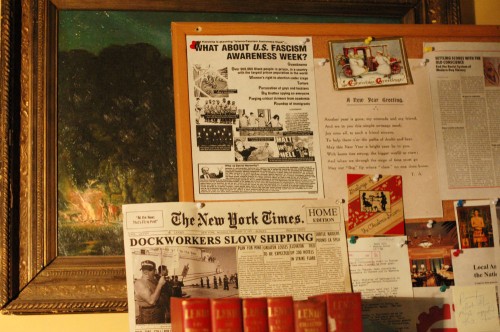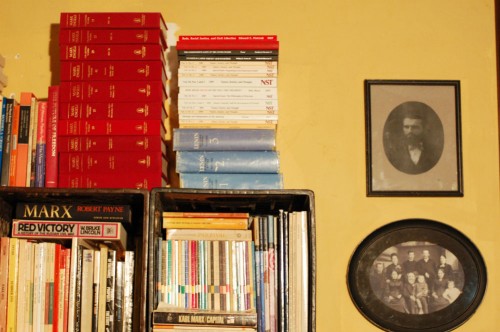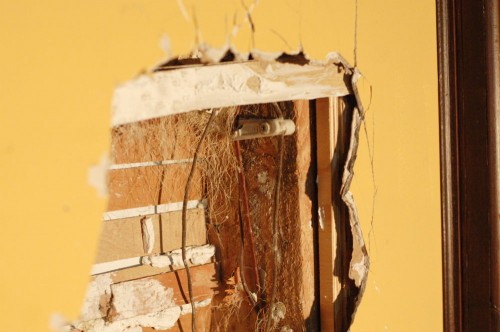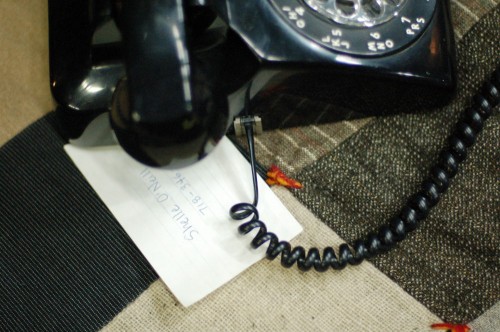Last week at the Public Theater, our production of The Intelligent Homosexual’s Guide to Capitalism and Socialism with a Key to the Scriptures held its final performance. The set was a very realistic (and very cluttered) brownstone in Brooklyn, NY, circa 2007. In today’s post, I’m going to take a look at some of the little touches in the set dressing which you may not have noticed.

In the farthest upstage left corner is a desk belonging to Gus, the father and apartment’s owner. The desk is overcome with papers, books, files, furniture and other knick-knacks from a lifetime of accumulation. Notice the article in The New York Times: “Dockworkers Slow Shipping.” In the course of the play, we learn that Gus was a longshoreman, and a strike by the dockworkers marked a turning point in his life. All of these papers and ephemera came from the Guthrie Theatre’s production, and were created there by Nick Golfis.

The set contained a large number of books—stacks and stacks of books, in fact. When the production moved from the Guthrie Theatre, many of these books came with it. However, most were law books and other nondescript leather-bound tomes. For our production, Tony Kushner and Mark Wendland (the set designer) decided we needed to replace as many of these as we could with a more realistic collection which Gus would have owned. If you took a closer look during the production, you would have noticed a remarkable collection of Communist, Socialist, Marxist and leftist books.

It is a shocking moment when Steven Pasquale first puts a statue through the wall of his father’s apartment. A close look at the wreckage would show the old and crumbly lath of the wall behind it, as well as the horsehair used to hold it all together. An even closer look would show cloth-covered wires along with porcelain electrical wire holders running along a wooden stud.

Here’s something you wouldn’t have seen. Above the main set was Gus’ room. During various scenes throughout the play, the audience can see Gus in his room walking around, reading, writing and engaging in other solitary and silent business. At one point, he makes a phone call. Near the end of the play, a new character named Shelle O’Neill shows up with a “suicide kit” for Gus to use. If you watch the show again, you may infer that Shelle is the person Gus was phoning earlier. In the photo above, you can see a note card with Shelle’s phone number actually written on it next to the phone Gus used. This little detail was visible only to the actor playing Gus.






I bet you could do a couple more posts about the dressing and props just on that show with the 6 weeks of previews and new material that Tony brought in every day. Mad Ups to the folks at the Guthrie.
Would a phone number with an area code and that phone be together in the same time period? I am unfamiliar with the play but the age of the decor seems to indicate that it would have been a time before area codes came into wide usage, but maybe that just may be from my locale.
Also saw this article about using brown crayons to make chocolates and thought of your site:
http://www.dailydanny.com/?p=4715
As the first paragraph says, this play takes place in 2007. Area code 718 was introduced in 1984.
Gotcha, missed that in the writing, just amazed at how good the work is so I was curious.